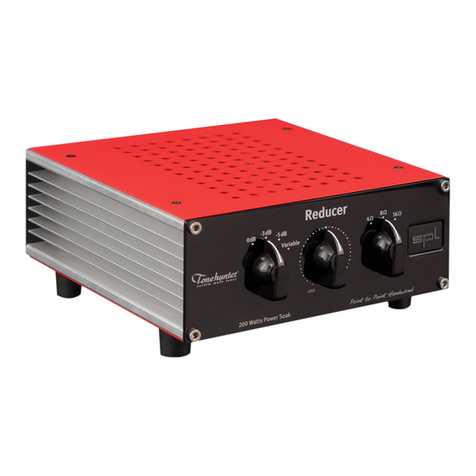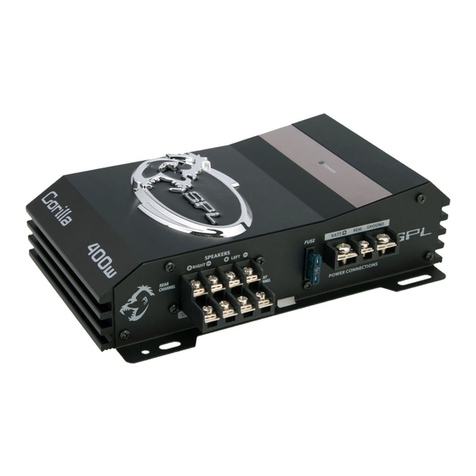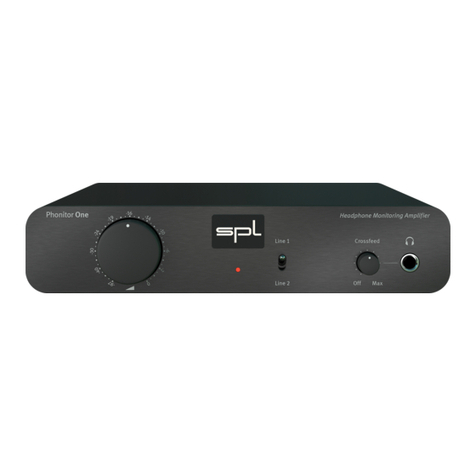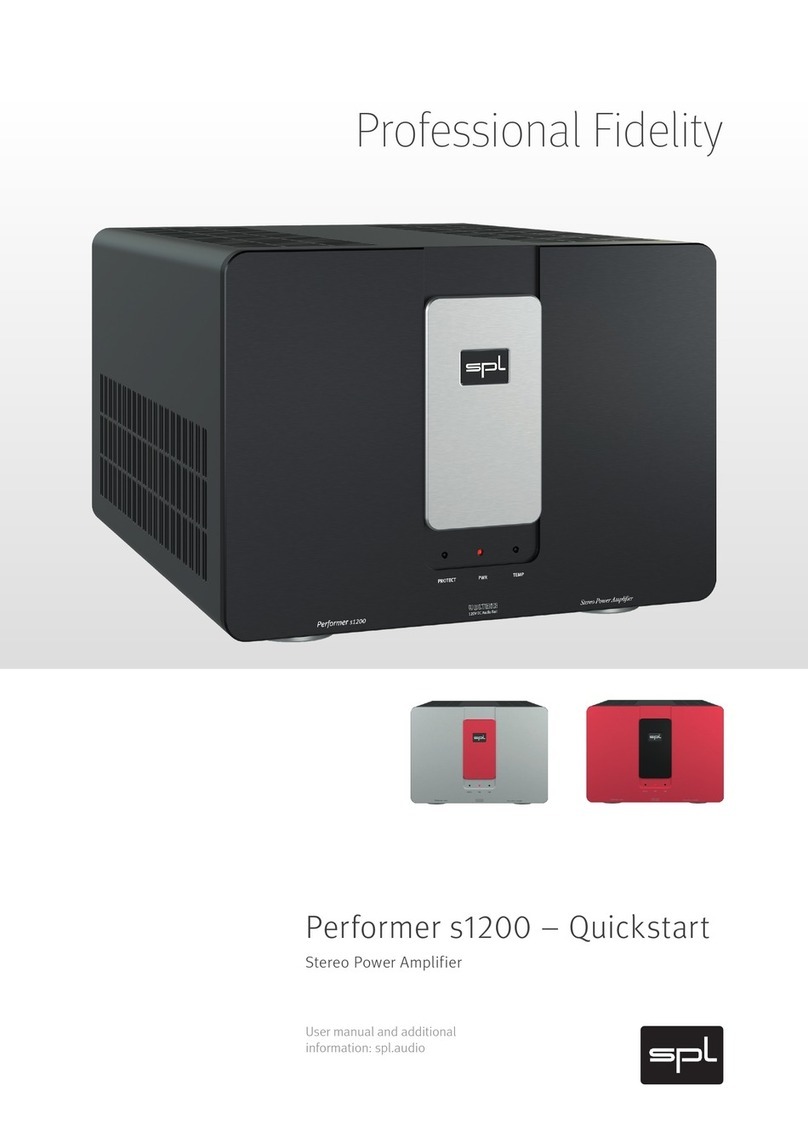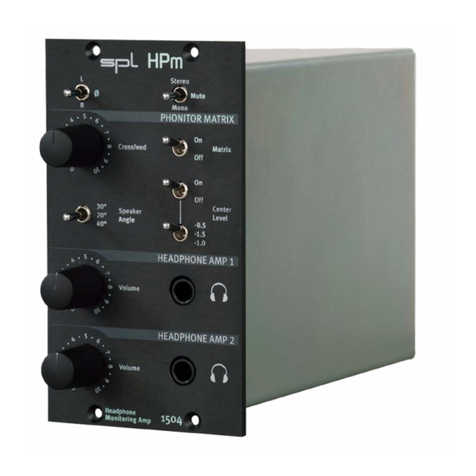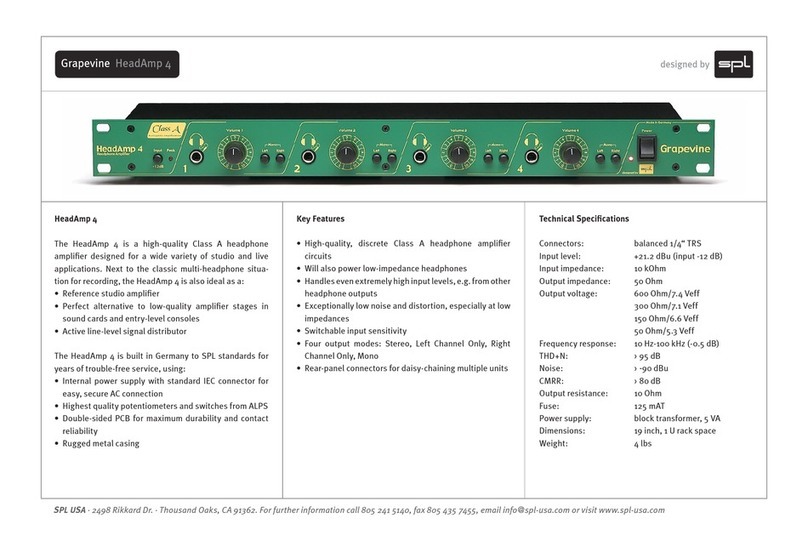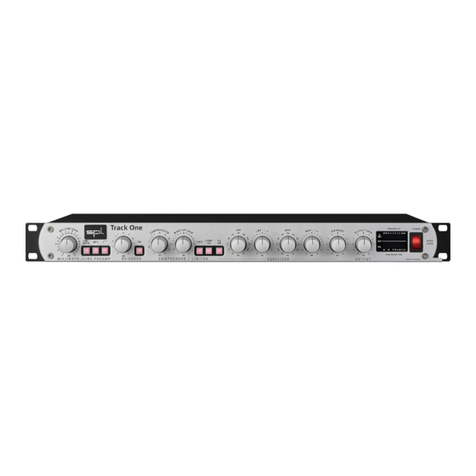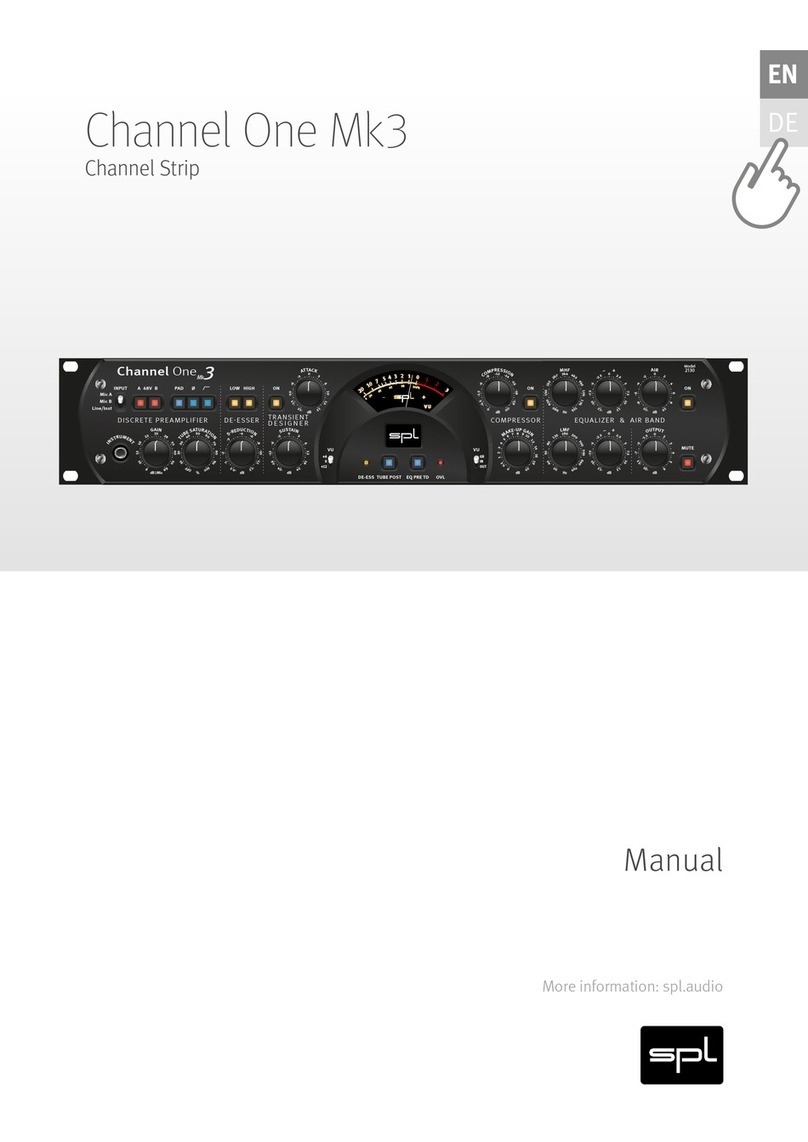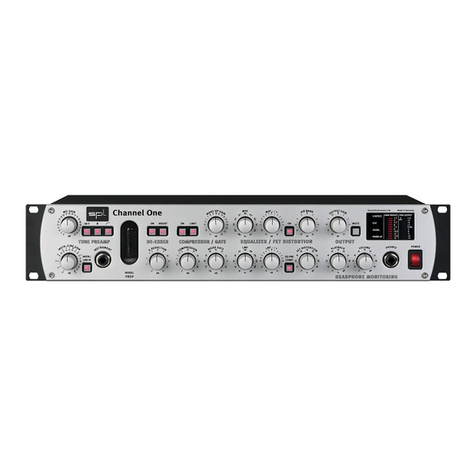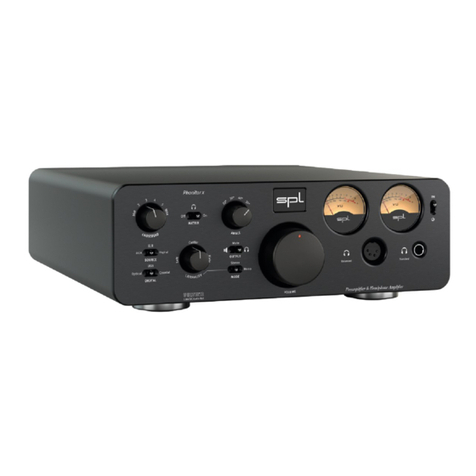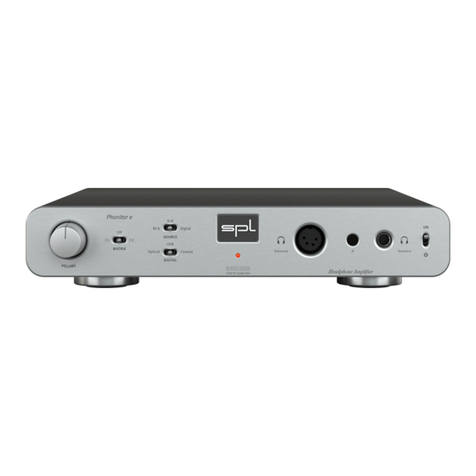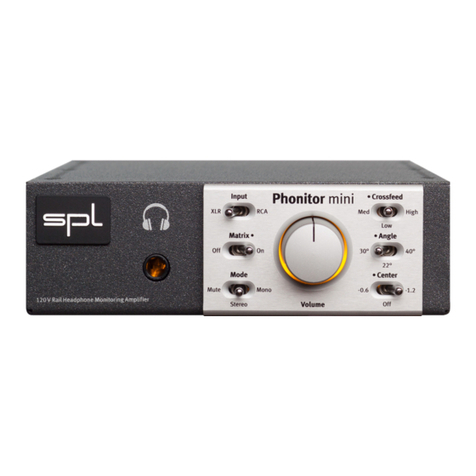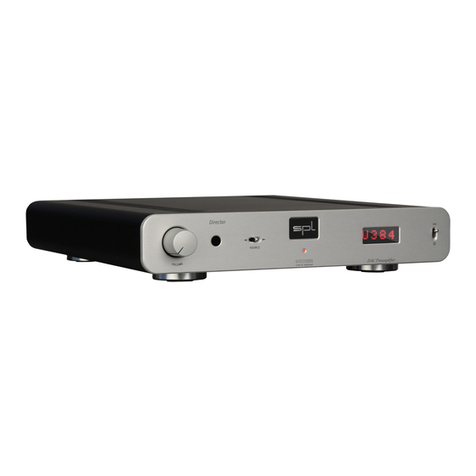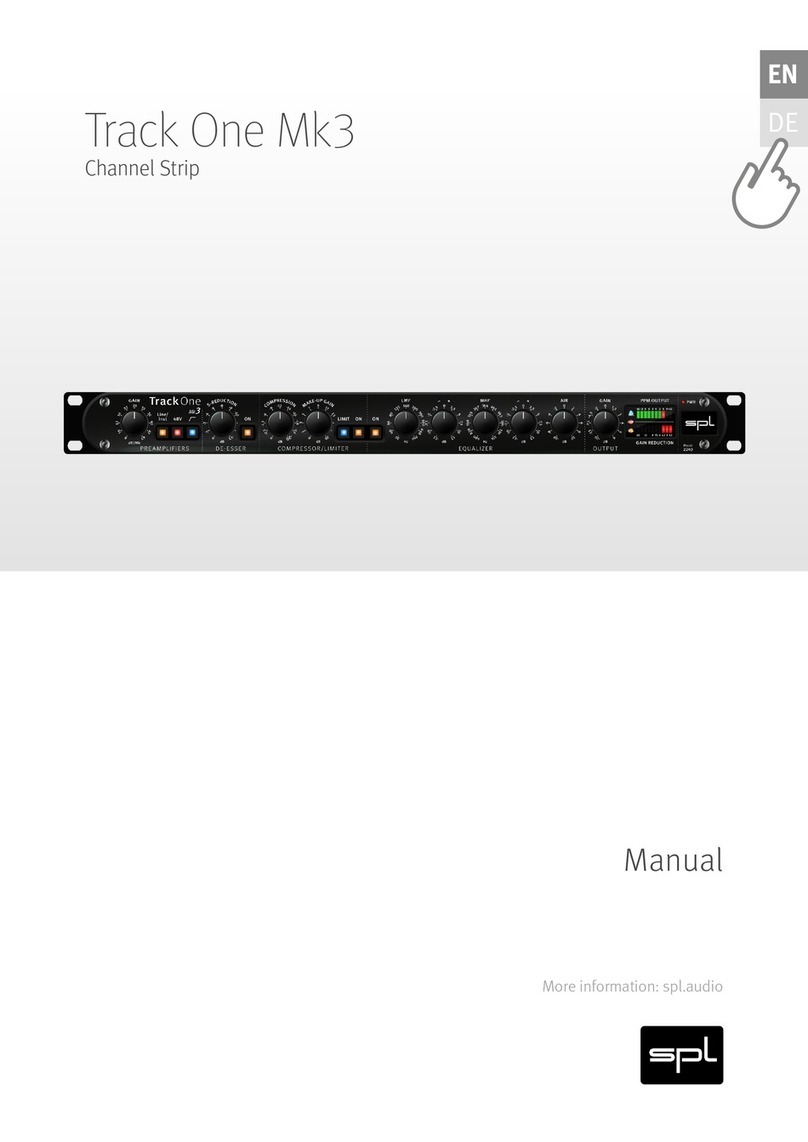4
Introduction
SPL is mainly known for the development of highly specialized audio-tools.
Our philosophy,”one product for one task”,is aimed at fast and simple opera-
tion in conjunction with high processing quality, to ensure highest musical
performance.
With Channel One SPL have produced a complete channel strip which for
the greater part is based on the processing concepts already successfully
realized in other products. The very complex task of a channel strip profits
particularly from the innovative techniques that have always allowed the
operation of SPL equipment to be efficient and objective.The ususal recor-
ding day is to a high degree determined by a series of opposing time limits –
the ”highly paid” singer/speaker desires a quick recording; however, if tech-
nical preparation takes a long time because of unsuitable equipment, time
will be lost, increasing the costs and souring the working environment.The
Channel One in all cases however allows fast production without any loss of
professional precision and diligence.
The Channel One consists of a transistor/tube pre-amplifier with micro-
phone-, line- and instrumental inputs, a de-esser, a compressor/limiter with
noise gate,an equalizer (EQ) section and a headphone monitor.
The Channel One has all necessary tools on board to prepare a recording for
a digital recording system.It offers many possibilities for sound processing –
the total bandwidth of subtle corrections to low-fidelity sounds is available.
The versatility and completeness of the unit permits its use in additional
areas, over and above the purely ”recording channel” facility, for instance in
mixdown,as high quality single outboard EQ or compressor.
To maximize user friendliness and for clarity all modules have been
reduced to the most important regulating and switching facilities. Fast and
effective operation is in no way impeded, quite the opposite – it´s
supported.More time remains to work creatively.
Great value was placed from the outset on high flexibility. An example of
this is the 3 separate inputs for microphone,line-signals or instruments,each
of which has been optimized to its function.
A twin triode tube is utilized in the process at 2 points – one immediately
after the amplifier stage and the other at the end of the chain, so that the
processed signal passes once again through the tube stage. This construc-
tion combines the advantages of the transistor pre-amplifier stage (high
performance with minimal distortions and low noise levels) with the
improved musical expression of the tone produced by tubes.
The microphone input can be optionally provided with Lundahl input
transformers. The input transformers deliver a five times enhanced micro-
phone level to the pre-amplifier, an amplification which reduces the equiva-
lent load to the electronic pre-amplifier. The balanced outputs can also be
equipped with Lundahl transformers, which deliver an even warmer and
fuller sound.
Principles

